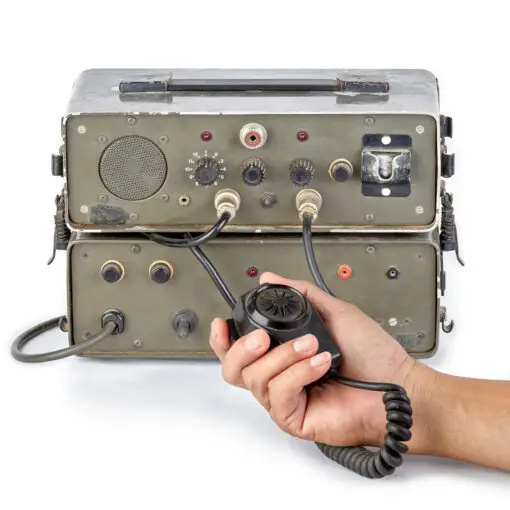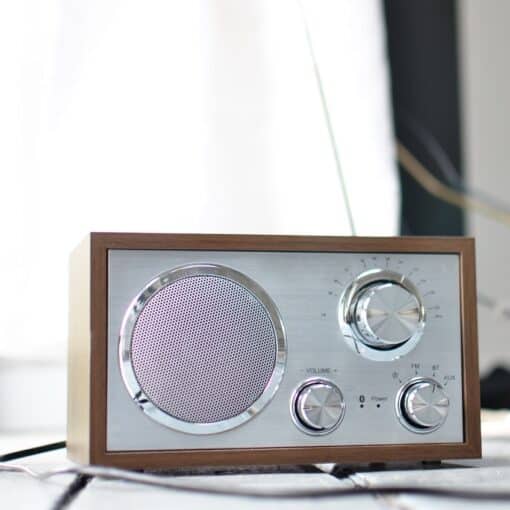Ham radio, also known as amateur radio, is a popular hobby among those interested in communication, electronics, and technology. With the ability to talk to people around the world and even send messages to satellites, ham radio offers a captivating world for beginners to explore. Mastering the art of amateur radio operations can be a daunting task, but knowing where to start is half the battle. For newcomers, it is essential to get the right kind of guidance and, thankfully, there are numerous books available to aid in this journey.
For those stepping into the world of ham radio, choosing the right book can make all the difference in learning about this fascinating hobby. Various publications cater to different aspects of amateur radio, from basic operation to advanced techniques and even preparation for licensure exams. By selecting the best book, beginners can fast-track their learning progress and avoid feeling overwhelmed.
One highly recommended book for ham radio beginners is the ARRL Operating Manual (12th Edition), which has been carefully written and reviewed by seasoned hams. Offering a comprehensive guide to amateur radio operations, this manual not only introduces the basics but also provides tips and valuable information for newcomers to accelerate their learning curve in the world of amateur radio.
Getting Started with Ham Radio
Ham radio, also known as amateur radio, is a popular hobby and communication service that allows individuals to communicate with others around the world. For beginners, getting into ham radio may seem intimidating, but with the right resources and guidance, it can be an enjoyable and rewarding experience.
Before diving into the world of ham radio, it’s essential to understand the licensing process. In most countries, amateur radio operators are required to obtain a license to legally transmit on designated frequencies. Depending on the level of license you wish to achieve, you may need to pass one or more exams covering technical, regulatory, and operating knowledge.
A great resource for beginners is Ham Radio For Beginners: The Ultimate Guide to Easily Understanding and Getting Started with Ham Radio by Michael Wells. This book provides a comprehensive introduction to the hobby, covering topics such as equipment selection, antenna setup, and communication techniques. It also offers insights into various aspects of amateur radio, such as participating in contests and emergency communications.
Another highly recommended book for ham radio novices is the ARRL Operating Manual, which offers an in-depth look into assembling your first station and the intricacies of operating it. This manual also covers participation in ham radio contests and public service events.
When setting up your first ham radio station, consider the following key components:
- A transceiver: This is the radio itself, which allows you to both transmit and receive signals.
- A power supply: Ham radio transceivers typically require a separate power supply.
- An antenna: Your antenna is crucial for transmitting and receiving signals. The type and size of the antenna will depend on various factors, such as the frequency band you’re interested in and your available space.
Once your equipment is set up, you can start exploring the numerous aspects of amateur radio communication, such as:
- Making local and international contacts
- Participating in emergency and public service communications
- Joining local clubs and online communities to learn from other experienced operators
- Engaging in contests and special events to improve your skills and knowledge
Remember, the key to success in ham radio is practice and perseverance. As a beginner, don’t hesitate to ask questions and seek guidance from experienced operators. With time and dedication, you’ll soon master the art of amateur radio communication and become a valuable member of the global ham radio community.
Ham Radio Mastery: The All-In-One Guide to Acing Your Technician Class Exam & Unlocking the World of Amateur Communication
With the guidance and support of this book, you can master the intricacies of ham radio and join the ranks of over one million ham radio operators worldwide
Choosing the Right Ham Radio Equipment
When starting in the world of ham radio, it’s essential to choose equipment that will meet your needs while accommodating your budget. With various features available on different transceivers, selecting the right one might seem overwhelming.
Your first consideration should be determining whether you need a portable or fixed setup. Portable ham radio transceivers are perfect for emergency and outdoor situations, while fixed setups are ideal for home or office use.
The power of the transmitter is crucial when it comes to ham radio communication. Typically, 5 to 8 watts is sufficient for local contacts, but you may require more power to communicate over long distances. Always ensure that your chosen transceiver meets your desired power requirements.
For beginners, a dual band transceiver that operates on both VHF and UHF bands is highly recommended. This feature allows for increased versatility and will enable you to access popular frequency bands. Furthermore, you should also look for transceivers with a good number of memory channels, allowing you to store and recall frequently used frequencies easily.
A programmable memory feature is helpful, as it permits customization of your transceiver settings to better suit your operating preferences. Another essential feature to look for is Continuous Tone-Coded Squelch System (CTCSS) and Digital-Coded Squelch (DCS) capabilities, which help block interference from other users and reduce noise on the channels.
An easy-to-read LCD screen will provide essential information on the current frequency, mode, and other relevant settings. Ensure that the LCD is backlit, especially if you plan on using your radio in low-light conditions.
Operating voltage compatibility is often overlooked but still remains an important factor when selecting a good ham radio transceiver. Make sure that the transceiver can work with your intended power supply, whether it’s a portable battery pack or a home power outlet.
Lastly, consider the different modes that the transceiver can support, such as FM, AM, and SSB. Depending on your interests and the specific type of communication you plan to engage in, having access to various modes can enrich your ham radio experience.
Taking the time to choose the right ham radio equipment will ensure a smooth, enjoyable, and successful introduction to this fascinating hobby.
Understanding Ham Radio Frequencies and Bands
Ham radio, or amateur radio, operates on various frequency bands, allowing users to communicate through a wide range of techniques. Each band has unique characteristics and applications, which we will delve into below.
Ham radio frequencies are divided into different bands, spanning from Very Low Frequency (VLF) up to Ultra High Frequency (UHF). In particular, most amateur radio activities take place on the High Frequency (HF), Very High Frequency (VHF), and Ultra High Frequency (UHF) bands.
High Frequency (HF) ranges from 3 MHz to 30 MHz and is commonly used by ham radio operators for long-distance communication. The propagation characteristics of HF frequencies make it possible to communicate across great distances, even between continents.
The HF band includes frequency ranges such as:
- 80 meters (3.5 – 4 MHz)
- 40 meters (7 – 7.3 MHz)
- 20 meters (14 – 14.35 MHz)
Very High Frequency (VHF) generally operates in the 30 MHz to 300 MHz range, usually used for local and regional communications. One popular VHF ham radio band is the 2-meter band, which falls between 144 and 148 MHz. VHF signals typically have a shorter range than HF but provide clearer signal transmission, making them suitable for local communication between ham radio operators.
Ultra High Frequency (UHF) covers the 300 MHz to 3 GHz range and is primarily used for short-range communications. The 70-centimeter band, which spans from 420 to 450 MHz, is a popular UHF amateur radio band. UHF’s propagation characteristics make it ideal for urban environments and building penetration.
Apart from HF, VHF, and UHF bands, ham radio operators can also utilize amateur satellites for communication. These satellites operate on VHF and UHF frequency bands, facilitating global communication among radio amateurs.
By understanding the various frequency bands and their applications, beginner ham radio operators can optimize their communication strategies and select appropriate equipment for their desired communication range. Before operating on any specific band, be sure to familiarize yourself with the band plan and regulations for your region.
ARRL Books and Manuals
The ARRL Operating Manual is an excellent resource, especially for those who are new to the world of ham radio. This comprehensive guide provides a detailed overview of various amateur radio operating activities, practices, and events. In addition, it contains beneficial information that every beginner can explore to advance their knowledge and skills in this hobby.
Another noteworthy publication is The ARRL Handbook for Radio Communications. This handbook is a must-have for every radio amateur’s bookshelf, regardless of whether they are experienced hams or new to the hobby. The 2022 edition of this handbook offers updated information that can help further enhance your amateur radio knowledge and skills.
Grounding and Bonding for the Radio Amateur addresses essential topics for ham radio operators, such as grounding, bonding, and lightning protection. By understanding these critical aspects of radio station setup, radio amateurs can ensure improved performance and safety.
Lightning protection, in particular, is a crucial consideration for ham radio operators. It is crucial to protect your equipment, as well as your personal safety. Several ARRL books and manuals discuss lightning protection in detail, ensuring that beginners have a solid understanding of the measures they should take.
ARRL publications are available in various formats, catering to the preferences of different individuals. Both Kindle editions and softcover books can be found, making it convenient for readers to choose based on their preferred reading medium. This variety also allows enthusiasts to build a well-rounded library of ham radio resources.
In summary, ARRL books and manuals, such as the ARRL Operating Manual and the ARRL Handbook for Radio Communications, equip beginners with the necessary knowledge to excel in ham radio operations. Their wide range of topics, from grounding and bonding to lightning protection, ensure that readers gain a comprehensive understanding of this fascinating hobby.
Joining Ham Radio Community
Ham radio is a fascinating hobby that brings together people from all walks of life who share a common interest in wireless communication. The community aspect of ham radio is what makes it so special. When you join the ham radio community, you become part of a vast network of individuals, groups, and organizations that spans the entire world.
One of the best ways to get started in ham radio is by learning from the experiences of others. There are many excellent beginner radio communication books available, such as “Ham Radio For Dummies” and “The ARRL Operating Manual (12th Edition)”. These books provide valuable knowledge and guidance on the technical aspects of ham radio, as well as helpful advice on etiquette, safety, and getting involved in the community.
In the United States, the ham radio community is primarily organized around local clubs and organizations. These groups offer education, training, and support to amateurs of all skill levels. To become actively involved in the ham radio community, consider joining a local club in your area. You can find a comprehensive list of clubs through the ARRL’s club directory.
Participating in online forums and discussion groups is another way to connect with the ham radio community. These platforms allow you to ask questions, share knowledge, and engage in conversations with fellow enthusiasts around the world. Popular online platforms include QRZ.com and eHam.net.
Finally, attending ham radio events, such as conventions and field days, provides an opportunity to meet fellow hams in person, exchange tips and experiences, and expand your network. These events are organized by local clubs and regional or national organizations, like the ARRL.
In conclusion, joining the ham radio community is an exciting and rewarding experience. By engaging with fellow enthusiasts through clubs, events, and online platforms, you can enhance your knowledge of ham radio, make valuable connections, and contribute to this unique global community.
Learning Portable and Mobile Operation
Portable and mobile operation in ham radio is essential for both beginners and experienced users who want to communicate on-the-go. This aspect of amateur radio allows you to optimize your setup for use outside a traditional stationary location, such as hiking, camping, or traveling by car.
To learn portable and mobile operation, it is advisable to invest in the best ham radio books for beginners. One such excellent resource is the ARRL Operating Manual 11th Edition. This comprehensive guide covers various topics on assembling your first station, operating it, and participating in ham radio contests and public service.
Another valuable resource is Ham Radio for the New Ham, a budget-friendly introduction to ham radio concepts, techniques, and gear. This book specifically touches on the topics of portable and mobile operation, as well as newer digital modes like FT8 and other WSJT-X modes.
Portable and mobile operation often involves using handheld, mobile, or portable transceiver radios. When starting, it’s crucial to:
- Understand your radio’s features and settings
- Learn how to configure your radio for optimal performance
- Familiarize yourself with antenna options
- Ensure you have a reliable power source
Radiosport, another topic touched upon in the aforementioned books, is a competitive aspect of ham radio. It involves participating in contests, events, and activities that test your skills in various areas such as Morse code proficiency, signal reception, and overall operating ability. For beginners, radiosport can provide an engaging and enjoyable way to apply and improve their amateur radio skills.
In conclusion, learning portable and mobile operation in ham radio can be an exciting and rewarding experience. Beginner-friendly books like the ARRL Operating Manual 11th Edition and Ham Radio for the New Ham offer excellent starting points to help you build a solid foundation in these essential aspects of amateur radio.
Pursuing Awards and DXing
Ham radio offers a variety of opportunities for enthusiasts to develop their skills and expand their knowledge. One exciting aspect of the hobby is pursuing awards and engaging in DXing – the practice of establishing long-distance radio communication with other operators around the world.
For beginners interested in exploring awards and DXing, several books cater to both aspects, providing valuable insights and guidance. Ham Radio DX – A Complete Guide: How to go from Karaoke to a DXCC Rockstar by Lucas L Ford is specifically designed to introduce you to the world of DXing, offering tips and techniques to help you become a successful DXer.
Another noteworthy resource is ON4UN’s Low-Band DXing, which covers low-frequency bands, a popular choice for those looking to engage in DXing. The book provides essential information on antenna design and propagation, ensuring you have the knowledge needed to make long-distance contacts.
When it comes to pursuing awards, there are numerous award programs available to ham radio operators, with the most notable being the DX Century Club (DXCC). Awards are typically granted based on the number of contacts made and the distances achieved. Books such as the ARRL Handbook for Radio Communications not only provide a wealth of radio communications knowledge but also include information on awards and DXing strategies.
In conclusion, pursuing awards and DXing are exciting aspects of ham radio that can inspire beginners and seasoned operators alike. By equipping yourself with the appropriate knowledge, you can not only become a skilled ham radio operator but achieve personal milestones and recognition within the amateur radio community.
Exploring News and Resources
Ham radio is a popular hobby and communication medium that enthusiasts all around the world enjoy. One of the best ways for beginners to dive into this fascinating domain is by exploring various news resources and gaining insights from experienced practitioners. This section will provide a brief overview of some valuable sources related to ham radio.
The ARRL (American Radio Relay League) is widely known as the go-to source for the latest news and updates regarding ham radio. Their website offers articles, tutorials, and announcements relating to amateur radio developments, events, and regulations. Additionally, the ARRL publishes the ARRL Handbook for Radio Communications, an essential reference for every radio amateur, whether experienced or new to the hobby.
Another excellent resource is Field Radio, an online platform devoted to providing educational articles, videos, and recommendations on ham radio operations, equipment, and books. For instance, they recommend the ARRL Operating Manual (12th Edition) as a perfect beginner’s guide that contains a wealth of information for new and seasoned hams alike.
Staying updated with amateur radio literature is an essential aspect of your journey. Various beginner-friendly radio communication books are available, such as Ham Radio For Dummies, Amateur Radio Log Notebook, and Ham Radio Operator Journal. These publications not only enlighten novices on the technical aspects of ham radio operations but also cover diverse topics, including community benefits, disaster preparedness, and personal readiness.
In conclusion, staying informed and connected with the ham radio community is crucial to advancing your skills and knowledge as a beginner. Utilize the resources mentioned above to quickly navigate through the world of amateur radio and enhance your expertise in this exciting domain.






